Advertising and Digital Marketing

Advertising and Digital Marketing
Advertising and digital marketing have revolutionized the way businesses communicate with their audiences. With the advent of the internet and advancements in technology, traditional advertising has expanded into a dynamic digital domain. This blog delves into the evolution, strategies, and significance of advertising and digital marketing in today’s business landscape.
The Evolution of Advertising
Early Beginnings
Advertising is not a modern concept. It dates back to ancient civilizations where merchants would use verbal promotion to sell goods. Wall paintings and inscriptions were some of the earliest forms of advertising, such as the promotional graffiti discovered in the ruins of Pompeii. These rudimentary forms of advertising were instrumental in creating awareness about products and services in local marketplaces.
The evolution of advertising reflects societal changes. In ancient Egypt, papyrus sheets were used for sales messages and posters. In Greece and Rome, town criers would announce public events and goods for sale. The introduction of the printing press in the 15th century by Johannes Gutenberg was a major milestone, allowing the mass production of advertisements and contributing to the spread of printed promotional materials.
Industrial Revolution and Mass Media
The Industrial Revolution in the 18th and 19th centuries transformed the global economy, leading to the mass production of goods. This economic boom necessitated innovative ways to promote products, as competition among manufacturers increased. Newspapers and magazines became vital advertising platforms, providing a broad reach at relatively low costs.
The late 19th century saw the rise of professional advertising agencies. These agencies specialized in creating compelling advertisements tailored to specific audiences. Billboards also gained popularity, offering a way to capture attention in urban areas. With the advent of color printing, advertisements became more visually appealing, enhancing their effectiveness.
By the mid-20th century, technological advancements introduced radio and television, which revolutionized advertising yet again. Radio allowed businesses to reach households with audio messages, while television added a visual dimension, making advertisements more engaging. Iconic TV commercials, such as Coca-Cola’s holiday campaigns, became cultural phenomena, influencing consumer behavior on a massive scale.
Transition to Digital
The advent of the internet in the late 20th century marked a paradigm shift in advertising. Initially, banner ads dominated early websites, providing a new avenue for businesses to promote their offerings. Over time, as technology advanced, digital advertising evolved into sophisticated, data-driven campaigns that could target specific demographics with unparalleled precision.
The emergence of search engines like Google in the 1990s transformed the digital advertising landscape. Search Engine Marketing (SEM) and Search Engine Optimization (SEO) became essential strategies for improving online visibility. Social media platforms such as Facebook, Twitter, and Instagram further revolutionized digital marketing by enabling direct interaction between brands and consumers.
According to a report by Wikipedia, the term “digital marketing” was first used in the 1990s, coinciding with the rise of e-commerce platforms and online marketplaces. The integration of analytics tools allowed marketers to measure campaign performance in real-time, optimizing strategies to achieve better results.
Understanding Digital Marketing
Digital marketing encompasses all marketing efforts conducted through digital channels, including search engines, social media, email, websites, and mobile applications. This modern approach to advertising offers businesses the ability to reach global audiences, track engagement metrics, and tailor content to specific consumer preferences.
Key Components of Digital Marketing
Digital marketing is a dynamic field encompassing various strategies and tools to connect businesses with their audiences. Below are the key components that form the foundation of effective digital marketing campaigns.
Search Engine Optimization (SEO)
SEO is the practice of improving a website’s visibility on search engines like Google. It ensures that your website ranks higher in search engine results pages (SERPs) for relevant keywords, thereby driving organic traffic.
Techniques for Effective SEO:
- Keyword Optimization: Identifying and incorporating relevant keywords into website content.
- Backlink Building: Acquiring high-quality backlinks from reputable websites to enhance credibility.
- Technical SEO: Improving website speed, mobile responsiveness, and overall user experience.
- Content Optimization: Creating engaging, valuable content tailored to user intent.
SEO is a long-term strategy that builds brand authority and attracts a steady stream of potential customers.
Pay-Per-Click Advertising (PPC)
PPC is a paid advertising model where businesses pay a fee each time someone clicks on their ad. It offers immediate visibility and is an excellent way to target specific demographics.
Popular PPC Platforms:
- Google Ads: Enables businesses to bid on keywords to appear in search results.
- Social Media Ads: Platforms like Facebook, Instagram, and LinkedIn allow for targeted advertising based on user behavior, interests, and demographics.
PPC campaigns require continuous monitoring and optimization to ensure a high return on investment (ROI).
Social Media Marketing
Social media marketing involves leveraging platforms like Facebook, Instagram, LinkedIn, Twitter, and TikTok to promote products or services. It enables businesses to build communities, engage with customers, and boost brand awareness.
Key Strategies:
- Organic Content: Posting engaging and relevant content to attract followers.
- Paid Advertising: Utilizing sponsored posts and ads to reach a broader audience.
- Influencer Collaborations: Partnering with influencers to promote products or services authentically.
Social media marketing fosters real-time interaction, helping businesses understand and respond to their audience’s needs.
Content Marketing
Content marketing focuses on creating and sharing valuable content to attract and retain a clearly defined audience. It’s not about direct selling but providing information that helps potential customers solve problems.
Popular Content Formats:
- Blogs: Informative articles that improve SEO and establish expertise.
- Videos: Engaging content shared on platforms like YouTube or embedded on websites.
- Infographics: Visual representations of data that are easy to share.
- Podcasts: Audio content that provides in-depth insights on specific topics.
A successful content marketing strategy builds trust and positions a brand as an industry leader.
Email Marketing
Email marketing continues to be one of the most affordable digital marketing strategies. It involves sending targeted messages to a list of subscribers to nurture leads and maintain customer relationships.
Effective Email Strategies:
- Segmentation: Categorizing subscribers based on preferences, behaviors, or demographics.
- Personalized Messaging: Tailoring emails to address individual needs.
- Automation: Using tools to send timely and relevant emails, such as welcome sequences or abandoned cart reminders.
Email marketing delivers a high ROI by fostering customer loyalty and encouraging repeat business.
Affiliate Marketing
Affiliate marketing is a performance-based strategy where businesses reward affiliates for driving traffic or sales through their promotional efforts. Affiliates can be bloggers, influencers, or dedicated affiliate marketers who promote products using unique links.
Benefits of Affiliate Marketing:
- Cost-Effectiveness: Payment is based on performance, reducing upfront costs.
- Extended Reach: Affiliates expand your brand’s reach by tapping into their networks.
- Tracking and Reporting: Tools allow for real-time monitoring of affiliate performance.
This strategy leverages the influence of trusted partners to drive results.
Analytics and Data Insights
Analytics is the backbone of digital marketing, providing actionable insights that guide decision-making. Tools like Google Analytics, HubSpot, and social media dashboards allow businesses to track performance and refine strategies.
Key Metrics to Monitor:
- Website Traffic: Understanding visitor numbers and behavior.
- Conversion Rates: Measuring the percentage of visitors who take desired actions.
- Engagement Metrics: Analyzing likes, shares, and comments on social media.
- Return on Investment (ROI): Evaluating the profitability of campaigns.
Data-driven marketing ensures that businesses can adapt quickly to changing trends and optimize their campaigns for better outcomes.
Integrating Key Components for Success
A successful digital marketing strategy combines these elements smoothly. For instance, a campaign might combine SEO to drive organic traffic, PPC to capture immediate attention, and content marketing to engage and educate the audience. Social media and email marketing can nurture leads, while analytics provide insights to fine-tune each element.
By leveraging these tools and strategies, businesses can create comprehensive campaigns that drive growth, enhance brand visibility, and build lasting relationships with their customers.
Advantages of Digital Marketing
Digital marketing has revolutionized the way businesses connect with their audiences, offering numerous advantages over traditional advertising methods. Below, we explore the key benefits that make digital marketing an indispensable tool for modern businesses.
Cost-Effectiveness
A major benefit of digital marketing is its affordability. Traditional advertising mediums like television, radio, and print can be prohibitively expensive, especially for small businesses. Digital marketing, on the other hand, offers scalable options to fit any budget.
Why Digital Marketing is Cost-Effective:
- Targeted Campaigns: Businesses can focus their efforts on specific demographics, reducing wasted spending.
- Pay-as-You-Go Models: Strategies like Pay-Per-Click (PPC) advertising only charge for actual engagement, ensuring every dollar counts.
- Low Entry Barriers: Platforms like social media allow businesses to start campaigns with minimal investment.
This affordability levels the playing field, enabling small businesses to compete with larger corporations by efficiently targeting niche audiences.
Measurability
Digital marketing stands out for its ability to deliver measurable results. Unlike traditional advertising, where impact can be difficult to quantify, digital platforms provide detailed metrics that offer insights into campaign performance.
Key Metrics to Track:
- Click-Through Rates (CTR): Measures how often users click on ads or links.
- Conversion Rates: Tracks the percentage of users who take desired actions, such as making a purchase or signing up for a newsletter.
- Return on Investment (ROI): Evaluates the profitability of marketing efforts.
With tools like Google Analytics, businesses can monitor website traffic, user behavior, and sales conversions. This data-driven approach allows marketers to refine strategies, optimize budgets, and achieve better outcomes.
Real-Time Engagement
Digital marketing enables real-time interaction between businesses and their audiences. This immediate communication builds trust, fosters loyalty, and enhances customer satisfaction.
Platforms for Real-Time Engagement:
- Social Media: Brands can respond to comments, messages, and reviews promptly, demonstrating attentiveness and care.
- Live Chat Features: Many websites offer instant support through chatbots or customer service representatives.
- Interactive Content: Polls, quizzes, and live videos encourage direct participation from users.
Real-time engagement not only resolves customer concerns quickly but also creates opportunities for meaningful connections, boosting brand credibility.
Global Reach
Digital marketing transcends geographical limitations, enabling businesses to reach audiences worldwide. A well-executed online presence ensures visibility across different markets, opening up opportunities for growth and expansion.
How Global Reach is Achieved:
- Search Engine Optimization (SEO): Helps businesses rank higher in global search engine results, increasing discoverability.
- Social Media Advertising: Platforms like Facebook and Instagram allow for targeting audiences in specific regions or countries.
- E-commerce Integration: Online stores can cater to international customers, offering localized experiences.
This global access empowers businesses to scale operations, attract diverse audiences, and compete in international markets.
Additional Advantages
While cost-effectiveness, measurability, real-time engagement, and global reach are among the most prominent benefits, digital marketing offers several other advantages:
Personalization
Digital marketing allows for highly personalized campaigns. By leveraging data, businesses can tailor messages to individual preferences and behaviors.
- Email Personalization: Dynamic content and customized recommendations improve engagement.
- Retargeting Ads: Show relevant ads to users who have previously interacted with a brand.
Personalization fosters stronger relationships and increases the likelihood of conversions.
Scalability
Digital marketing campaigns can be easily scaled up or down based on business goals and budgets. Whether launching a global campaign or targeting a local market, businesses can adjust their strategies without significant disruptions.
Sustainability
Compared to traditional advertising, digital marketing is more environmentally friendly. Digital campaigns reduce the need for physical materials like paper and ink, contributing to sustainability efforts.
Challenges in Advertising and Digital Marketing
Advertising and digital marketing have evolved significantly, offering businesses innovative ways to reach their audiences. However, this evolution comes with its own set of challenges that require careful navigation. Below, we explore some of the most pressing issues faced by marketers today and discuss strategies for overcoming them.
Ad Fatigue
In today’s digital age, consumers are exposed to an overwhelming number of advertisements daily. This constant bombardment has led to a phenomenon known as ad fatigue, where audiences become desensitized to ads, resulting in reduced engagement and effectiveness.
Causes of Ad Fatigue:
- Overexposure: Seeing the same ads repeatedly on multiple platforms.
- Lack of Creativity: Generic and uninspiring advertisements fail to capture attention.
- Intrusiveness: Ads that disrupt user experiences, such as pop-ups, can irritate viewers.
Solutions to Combat Ad Fatigue:
- Diversified Content: Rotating ad creatives and using varied formats to maintain audience interest.
- Personalization: Leveraging data to deliver relevant ads that resonate with individual preferences.
- Frequency Capping: Limiting the number of times a user sees an ad to prevent overexposure.
By addressing ad fatigue, marketers can create campaigns that engage rather than alienate their audiences.
Privacy Concerns
The rise of targeted advertising has brought privacy concerns to the forefront. Consumers are increasingly wary of how their data is collected, stored, and used, leading to stricter regulations and ethical considerations.
Key Privacy Challenges:
- Data Collection: Transparency issues around how user data is gathered.
- Regulatory Compliance: Laws like the General Data Protection Regulation (GDPR) and California Consumer Privacy Act (CCPA) impose stringent requirements on data handling.
- Loss of Trust: Misuse of data can damage brand reputation and erode consumer trust.
Strategies for Addressing Privacy Concerns:
- Transparency: Clearly communicate how data is collected and used.
- Opt-In Policies: Allow users to actively consent to data sharing.
- Data Security: Invest in robust cybersecurity measures to protect user information.
Balancing effective advertising with ethical data practices is essential for building trust and maintaining compliance.
Competition
The digital marketing landscape is highly competitive, with countless brands vying for attention. This saturation makes it challenging for businesses to stand out and connect with their target audiences.
Challenges in a Competitive Space:
- Content Overload: The sheer volume of digital content makes it difficult to capture attention.
- Limited Attention Spans: Users spend only a few seconds deciding whether to engage with content.
- Rising Costs: Increased competition drives up the cost of paid advertising.
Strategies to Overcome Competition:
- Unique Value Proposition (UVP): Clearly articulate what sets your brand apart.
- Innovative Campaigns: Employ creative strategies and emerging technologies to differentiate your marketing efforts.
- Community Building: Foster loyalty through authentic interactions and engaging content.
Success in a competitive market requires businesses to constantly innovate and adapt their strategies.
Case Studies and Reports
Examining successful campaigns and industry reports provides valuable insights into overcoming challenges and capitalizing on opportunities.
The Coca-Cola Campaign
Coca-Cola’s “Share a Coke” campaign is a quintessential example of combining traditional advertising with digital marketing. By personalizing bottles with popular names, Coca-Cola encouraged consumers to share photos on social media, creating a viral effect.
Key Takeaways:
- Personalization: Customizing products creates emotional connections.
- Integration: Combining offline and online strategies amplifies impact.
- User-Generated Content: Encouraging audience participation fosters organic reach.
Wikipedia’s Insights
According to Wikipedia, global spending on digital advertising surpassed traditional advertising in 2019. The report highlights that businesses now allocate over 60% of their marketing budgets to digital channels, underscoring the growing importance of online strategies.
Key Trends Identified:
- Shift to Digital: Businesses prioritize digital channels for their cost-effectiveness and reach.
- Data-Driven Decisions: Analytics play a crucial role in optimizing campaigns.
- Omnichannel Marketing: A cohesive presence across multiple platforms enhances customer experiences.
Future Trends in Advertising and Digital Marketing
As technology advances, new trends are shaping the future of advertising and digital marketing. Businesses must stay ahead of these developments to remain competitive.
Artificial Intelligence (AI)
AI is revolutionizing digital marketing by enabling personalized campaigns, predictive analytics, and automated customer service.
Applications of AI in Marketing:
- Chatbots: Provide 24/7 customer support and enhance user experiences.
- Predictive Analytics: Analyze data to anticipate customer behavior and optimize campaigns.
- Content Generation: Automate the creation of personalized emails, ads, and other marketing materials.
Voice Search Optimization
The rise of smart speakers like Amazon Alexa and Google Assistant has made voice search a critical component of digital marketing.
Strategies for Voice Search:
- Conversational Keywords: Optimize for natural language queries.
- Featured Snippets: Aim to appear in position zero on search engine results.
- Local SEO: Ensure business information is accurate and accessible for voice searches.
Video Marketing
Video content continues to dominate digital platforms, with YouTube, TikTok, and Instagram Reels leading the charge.
Why Video Marketing Works:
- Engagement: Videos capture attention and convey messages effectively.
- Versatility: Formats like tutorials, testimonials, and live streams cater to diverse audience preferences.
- Shareability: Compelling videos are more likely to be shared, increasing reach.
Sustainability and Ethical Marketing
Consumers are increasingly drawn to brands that prioritize sustainability and ethical practices. Transparency and social responsibility are becoming integral to marketing strategies.
Implementing Ethical Practices:
- Sustainable Packaging: Highlight eco-friendly initiatives.
- Cause Marketing: Support social or environmental causes that align with your brand values.
- Authentic Storytelling: Share genuine stories that resonate with audiences.
Augmented Reality (AR) and Virtual Reality (VR)
AR and VR are transforming customer experiences, particularly in industries like retail, real estate, and entertainment.
Benefits of AR and VR:
- Interactive Shopping: Allow customers to visualize products in their environment.
- Immersive Experiences: Create memorable brand interactions through virtual tours and simulations.
- Enhanced Engagement: Foster deeper connections with audiences through innovative technologies.
Conclusion
Advertising and digital marketing are indispensable for businesses in the digital age. By understanding their evolution, leveraging innovative strategies, and staying abreast of emerging trends, brands can effectively connect with their audiences and achieve their goals. As technology continues to advance, the possibilities for advertising and digital marketing are boundless.







